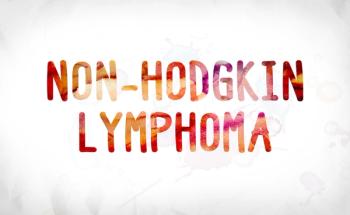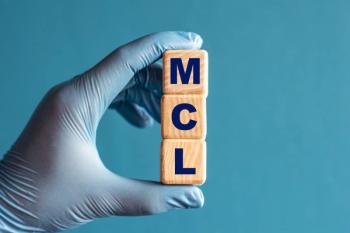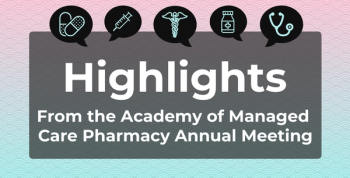
Increased Hand Sanitizer Use Poses Risks to Children's Eyes
During the coronavirus disease 2019 pandemic in France, researchers found a 7-fold increase in the number of alcohol-based hand sanitizer eye exposures among children.
New research1 published in JAMA Ophthalmology highlights the unintended consequence of increased hand sanitizer use among children during the coronavirus disease 2019 (COVID-19) pandemic: a greater potential for
“Regular hand disinfection with alcohol-based hand sanitizer (ABHS) is one of the main barrier gestures to limit the spread of COVID-19,” researchers wrote. But widespread use of ABHS has been associated with an anecdotal increase in unintentional exposures in children since the pandemic’s onset.
“Chemical injuries vary in severity from mild and self-limited to severe and vision-threatening or even globe-threatening,” Kathryn Colby, MD, PhD, wrote in an accompanying
For those exposed to chemical irritants, early diagnosis and treatment are paramount because they can reduce the long-term sequelae of chemical eye injuries.
In an effort to quantify the trend of pediatric eye exposures to ABHS during the pandemic and uncover the severity of the ocular lesions, the researchers conducted a national
In a subsequent case series analysis, they evaluated electronic medical records of children younger than 18 who consulted the emergency department of a referral center in pediatric ophthalmology for exposure to a chemical agent within the 2 windows.
“Using 2 complementary data sets, we showed a 7-fold increase in the number of ABHS eye exposures in children with several cases of serious corneal lesions,” the authors wrote.
An analysis of national epidemiologic data revealed:
- The proportion of calls to PCCs associated with chemical eye splatter in children was significantly lower compared with the same period in 2019: 2336 cases (2.2% of pediatric calls) in 2020 vs 2553 cases (4.2% of pediatric calls) in 2019 (difference, 2.0 percentage points 95% CI, 1.9-2.2; P < .001)
- The proportion of ABHS eye exposures significantly increased, from 1.3% in 2019 (33 cases; mean [SD] age, 3.4 [3.8] years) to 9.9% in 2020 (232 cases; mean age, 4.5 [3.5] years) (difference, 8.6 percentage points; 95% CI, 7.4-9.9; P < .001)
- The proportion of ABHS eye splatters significantly increased during the study period, from 5% in April 2020 to 9%, 10%, 11%, and 15% in May, June, July, and August 2020, respectively
- In 2020, 63 cases of ABHS exposure occurred in a public place, while none were reported in 2019
- Cases of ABHS exposures in public places continuously increased, from 5 in May (1.0% of eye exposure; 12.2% of ABHS), to 9 in June (1.8% and 16.4%, respectively), to 16 in July, to 33 in August (up to August 24; 8.0% and 52.4%)
Although the case series found no difference between the 2 periods regarding the proportion of chemical eye exposures among pediatric populations, in 2019, 1 boy was admitted for an exposure to ABHS compared with 16 cases of ABHS eye splatter admitted in 2020.
Of these 16 cases:
- 8 had a corneal and/or conjunctival ulcer, involving more than 50% of the corneal surface for 6
- 2 (12%) of these children required amniotic membrane transplant (AMT) with general anesthesia after a median time of 3 days of medical treatment, because of delayed re-epithelialization.
- 1 case required AMT twice because of an incomplete re-epithelialization 10 days after the first AMT
Overall, the study “illustrates collateral damages of the widespread use of ABHS during the COVID-19 pandemic and led to a
Any delay in washing eyes after exposure is detrimental to the ocular surface. Two additional
Currently, the FDA recommends a concentration of 60% to 95% ethanol or isopropanol for ABHRs, but composition is highly variable. Eyes exposed to undiluted ethanol for longer than 30 seconds can experience immediate cytotoxic effects on corneal epithelia cells while the substance reduces proliferation and induces apoptosis. Irritant additives like hydrogen peroxide, polyethylene glycol, or perfumes can also increase ocular toxicity.
To limit risks of ABHS-induced ocular injuries, experts recommend parents promote hand washing with soap and water over ABHRs among children, especially when at home. Teaching children how to use sanitizers, having separate dispensers at lower heights in public places, and placing caution signs next to dispensers could all help mitigate risks.
References
- Martin GC, Le Roux G, Guindolet D, et al. Pediatric eye injuries by hydroalcoholic gel in the context of the coronavirus disease 2019 pandemic. JAMA Ophthalmol. Published online January 21, 2021. doi:10.1001/jamaophthalmol.2020.6346
- Colby K. Unintended consequences of hand sanitizer use in the coronavirus disease 2019 pandemic. JAMA Ophthalmol. Published online January 21, 2021. doi:10.1001/jamaophthalmol.2020.6327
- Yangzes S, Grewal S, Gailson T, Grewal SPS. Hand sanitizer-induces ocular injury: a COVID-19 hazard in children. JAMA Ophthalmol. Published online January 21, 2021. doi:10.1001/jamaophthalmol.2020.6351
Newsletter
Stay ahead of policy, cost, and value—subscribe to AJMC for expert insights at the intersection of clinical care and health economics.







































